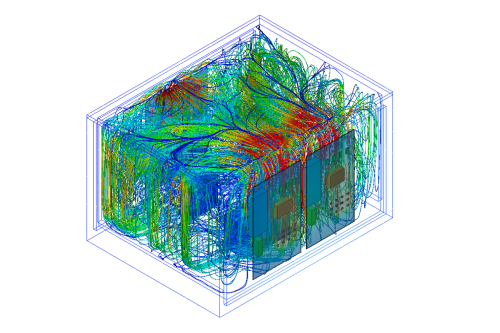Mechanical Design

Thermal Design
Thermal design teaches how to design a thermal system optimally and using all economic and engineering concepts in the best way. Therefore, thermal system design combines various economic concepts such as cost analysis with all the basic concepts of heat science such as thermodynamics, heat transfer, fluid dynamics, as well as areas such as mechanics, strength, machine elements, and numerical mathematics. In short, it is a framework that covers all areas of engineering. Another aspect of modern thermal design is that it relies heavily on computer modeling.
- Thermal Analysis Advantages
- At its most fundamental, it is a digital test method. Before physically producing the parts, they can be examined virtually in a computer environment.
- Since possible problems are displayed in the computer environment, the arrangements are revised in the design and important steps are taken in order to make a smooth design.
- Good visualization of structural behavior and failure under various loading conditions.
- Insight information (Weight, Power, Cost) on critical design parameters is obtained.
- Faster and cheaper design cycle.
- Weight reduction, topology optimization, metal replacement material changes can be done with the finite element method and faster, more effective and economical methods.
© Copyright Copyright © 2026 megart.com.tr Tüm Hakları Saklıdır.
Web Tasarım & Yazılım UX Ajans Yazılım & Medya
Web Tasarım & Yazılım UX Ajans Yazılım & Medya
